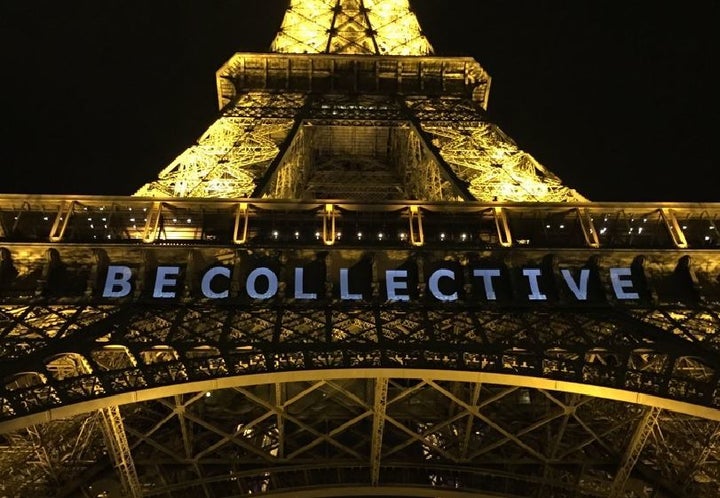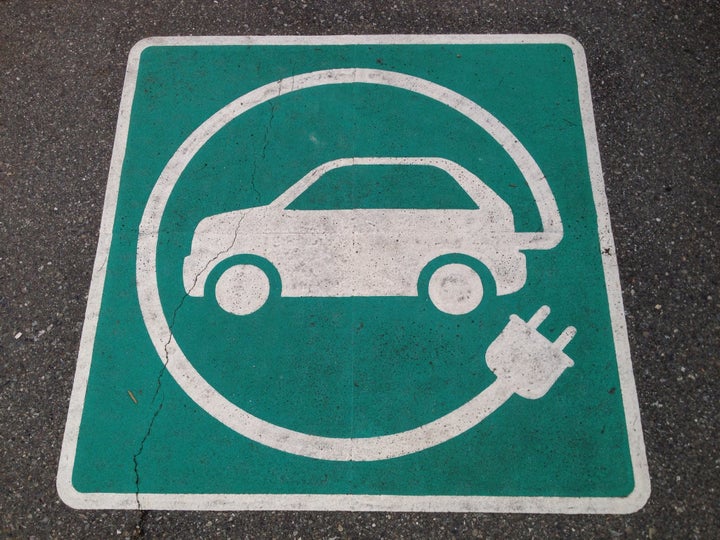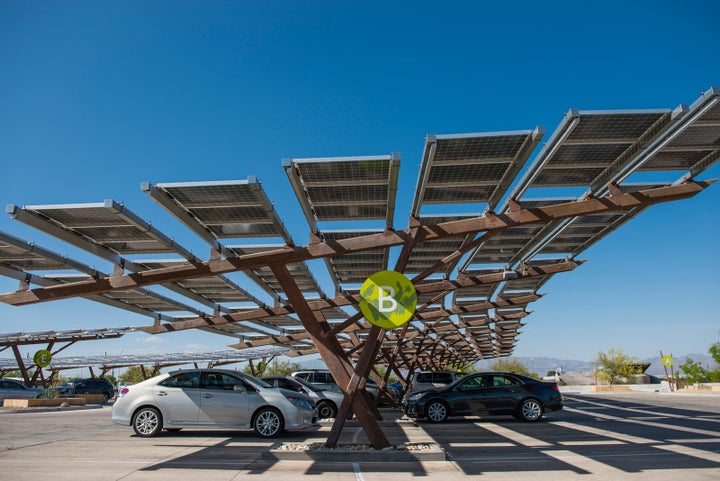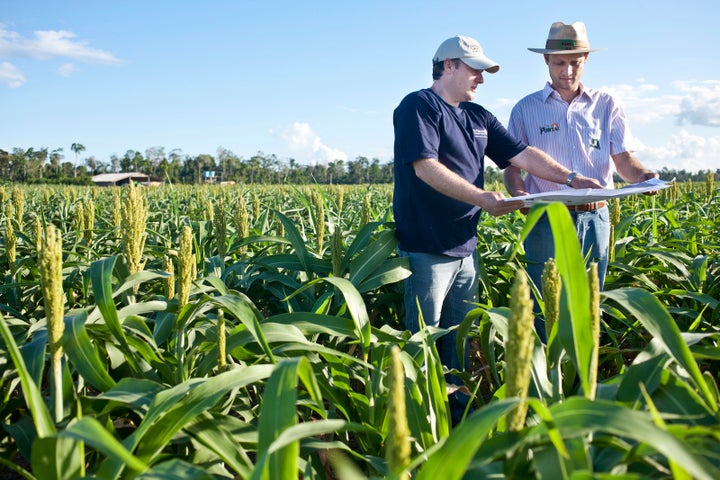
As the Paris Climate Agreement takes effect this month, everyone can do his or her part to reduce emissions in the fastest and biggest way. © The Nature Conservancy (Madeline Van Tassel)
Mark Tercek is the president and CEO of the Nature Conservancy and author of Nature’s Fortune. Follow Mark on Twitter: @MarkTercek.
Last month, enough world leaders ratified the Paris climate agreement to officially lock it into place.
With the Agreement set to take effect on November 4, now is the time to talk about action—specifically, actions aimed at reducing greenhouse gas emissions in the fastest and biggest way.
To meet the Paris Agreement’s goal of limiting temperature increases to less than 2 degrees Celsius, humankind needs to reduce greenhouse gas emissions by about 80% by 2050 and to net zero by 2080.
That’s a tall order. But I think it’s doable if we get to work right away in four key areas.
1) Innovation
First, we need to dramatically change the technologies we use to produce and consume energy. Good news: this transformation is already well underway.
For example, take horizontal drilling and hydraulic fracturing to tap shale gas resources. The price of natural gas has dropped dramatically, replacing a significant portion of the coal we were using for power generation. When done right—in an environmentally safe way—natural gas is an important halfway house to a clean energy future.
Natural gas reduces emissions when it’s a substitute for coal (and when there are no methane leaks). But it’s still a fossil fuel. We can’t let it displace renewables, and it can’t be a long-term solution.
We need to continue to bring zero-carbon sources of power onto the grid—and we’re seeing more good news here, too.

Renewable, zero-carbon sources of energy are becoming more cost-effective. © The Nature Conservancy (Liz Georges)
Wind power is one example where changes in technology have dramatically cut costs. The newest wind turbines are huge and highly efficient. They produce four times the power of the turbines of the not-so-distant past. And solar power is just behind. By 2020, experts expect solar power to be as cheap or cheaper than power produced by fossil fuels.
And before we know it, the energy revolution will show up in our own backyards. Our simple electric meters will be replaced by powerful computers that will allow us to manage solar panels and storage batteries, electric cars and air conditioners with smart thermostats that track the changing cost of electricity. These computers will help make the grid more reliable and lower our electric bills.
And speaking of electric vehicles, I think we’re at a tipping point. The technology is no longer an exotic luxury. Cars like the Chevy Bolt and the Nissan Leaf are going mainstream.

Electric vehicles are a key part of the energy revolution. © Paul Krueger/Flickr via Creative Commons license
2) Investment
Experts estimate that we’ll need to invest $1 trillion to $2 trillion per year in clean energy from now until 2050 to limit global warming to below 2 degrees Celsius. Most of this money will need to come from the private sector.
The best way to stimulate this investment is to make sure that markets let innovations compete. And once again, there’s good news: we’re seeing more and more of these kinds of market-based solutions at the state level.
In Florida, for example, The Nature Conservancy and other conservation groups worked with Republican leaders to support a ballot measure incentivizing private solar installations. Earlier this fall, voters overwhelmingly passed the measure. Citizens took action to open Florida’s market to the solar revolution.

Solar panels are becoming more widespread as costs decrease. Experts expect solar power to be as cheap or cheaper than fossil fuel energy by 2020. © The Nature Conservancy (Dave Lauridsen)
3) Policy
While we’re seeing good progress at the state level, there is still an urgent need for strong federal policy that accelerates emissions reductions in the most sensible, lowest-cost way.
Economists on both sides of the aisle generally agree on the best way to do this—putting a price on carbon. Whether cap and trade or a carbon tax, a price on carbon would incentivize emissions reductions to occur at the lowest cost. It would promote the needed investments in R&D on low-carbon technology. And it would allow citizens and businesses to plan accordingly, increasing their energy efficiency to keep their expenses stable.
Unfortunately, partisan politics have stalled progress on federal climate legislation. How can we break the logjam and get our federal government to follow the powerful example of the 40 countries and 20 states and provinces that have already put a price on carbon? We all need to step up our engagement in politics.
Many people are discouraged about politics, and they doubt that citizens can engage and make a positive difference. But there is reason to be optimistic.
Speaking up and pushing for positive change can make a bigger difference than some might think. Take the legalization of same sex marriage, which seemed a distant possibility not so long ago. People who cared and engaged on this important matter made a big difference. Likewise, Bernie Sanders’ supporters elevated climate change as an issue and strengthened the Democratic Party’s platform on this front. People who roll up their sleeves and engage on issues really do make a significant difference.
And second, we need to help leaders recognize that the costs of addressing climate change will be far less than the price of doing nothing.
Carbon pollution already costs us a lot. Home insurance costs are rising as the toll from extreme storms grows. Property values are declining in the drought-ridden West and coastal areas now experiencing sunny-day floods. Health problems like asthma are growing worse as hot summer days increase urban smog.
And our carbon consumption burdens the world’s poorest nations in ways we can’t even comprehend.
Here in the U.S., if a 20-inch downpour floods our homes—as people in Louisiana recently experienced—flood insurance can help us rebuild. But when massive floods hit Pakistan in 2010, half the country was underwater. Twenty million people lost their homes or crops. They didn’t have flood insurance.
Farmers growing corn in the U.S. have crop insurance to get them through when drought scorches their crops. There is no insurance for farmers in Malawi, who are living through a devastating drought that created a food security emergency across much of Africa.
The convenience of air conditioning in the U.S. gave birth to our Sun Belt boom. But air conditioning is a scarce convenience in India and the rest of south Asia, where thousands were killed during heat waves this year and last year when temperatures soared above 120 degrees.
Putting a price on carbon pollution is a powerful economic tool that can save us money in the long run—and result in cleaner air, more reliable energy, and safer, healthier communities.
4) Personal Responsibility
Finally, getting down to net zero carbon emissions will require everyone to do his or her part.
Farmers can adopt best practices for their fertilizer applications. Building owners can turn down the air conditioning on the hottest summer days. Cities can adopt smart growth policies to reduce sprawl and traffic. Colleges, hospitals and small manufacturing plants can move to more efficient combined heat and power systems. Urban natural gas companies can plug their methane leaks.
Let’s change the way we think about energy. Addressing climate change is about more than how we produce energy. It’s also about how we consume energy.
We won’t meet our ambitious climate goals unless we all take responsibility for our choices—and use our knowledge to solve our part of the problem.

Sustainable agriculture practices can reduce emissions of nitrous oxide--a more potent greenhouse gas than carbon dioxide. © Rafael Araujo
A Moral Issue
Let’s assume a big price on carbon is coming soon. When it arrives, it will have a big impact on all of our choices.
We can prepare by reducing our energy consumption now.
In fact, hundreds of major corporations already are making decisions as if there’s already a national price on carbon. If a decision doesn’t offer good returns after factoring in the cost of carbon emissions, they won’t do it.
But climate change is ultimately more than an economic and environmental issue. It's a moral issue.
The impacts of climate change are touching down everywhere we look, from food production to human health to water quality and scarcity. And they are burdening the world's poorest nations in a disproportionate way, from the catastrophic damage Hurricane Matthew wreaked on Haiti to the major food crisis in drought-stricken southern Africa.
These changes we are seeing are real. They are happening now. And they require bold action from all sectors of society.
Each of us has a responsibility to step up now to reduce emissions and help put the world's Paris climate plans into action.
